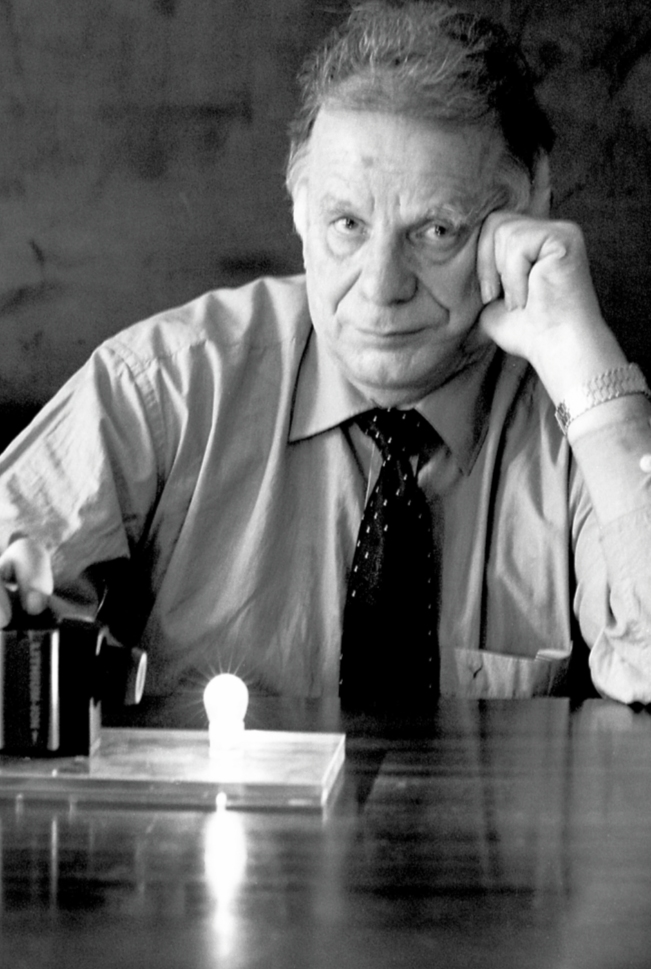Zhores Ivanovich Alferov
DOI: 10.1063/PT.3.4325
Nobel laureate Zhores Ivanovich Alferov, whose work led to room-temperature semiconductor lasers and other groundbreaking devices, died on 1 March 2019 in Saint Petersburg, Russia.
Alferov was born on 15 March 1930 in Vitebsk, Belarus. He was 11 when the Nazis invaded the Soviet Union. His older brother, Marx, whom he adored, was killed in combat in 1944. After that traumatic experience, Alferov became a fighter for international understanding and peace.

Zhores Ivanovich Alferov
SKOLKOVO FOUNDATION

Despite the chaos of the war and its aftermath, Alferov finished school in Minsk on time. He was accepted to the Leningrad Electrotechnical Institute and graduated with a physics degree in 1952. The next year Alferov went to the Physico-Technical (now Ioffe) Institute in Leningrad. Its founder, Abram Ioffe, had already begun systematic studies of semiconductors in the 1930s. Alferov was the institute’s director from 1987 until 2003.
Alferov also took over another brainchild of Ioffe’s. Convinced of the importance of educating teenagers in science, Ioffe established in the 1930s what became known as his “kindergarten.” After the Soviet Union collapsed and many young people believed they should study economics for a better life, Alferov founded a lyceum in 1997 to teach science and foreign languages to 15- to 17-year-olds. In 2002, building on a core of young scientists, he started what is now the Saint Petersburg Academic University. He served as its rector until his death.
Russian president Dmitry Medvedev launched a modernization program in 2009. One initiative was the merging of current teaching and applied research in Skolkovo, a new science and technology district outside Moscow, and enabling the transfer of knowledge and technology to high-tech startups. From 2010 to his death, Alferov served as scientific advisory council cochair of the Skolkovo Foundation.
In 1960, 43 years after Albert Einstein predicted stimulated emission, Theodore Maiman demonstrated optical lasing in ruby. Within 18 months, lasing had been produced in other media, including semiconductor diodes based on gallium arsenide homojunctions. At that time, solid-state and gas lasers operated at room temperature, whereas semiconductor lasers operated only at 4 K. Researchers soon found numerous applications for 300 K lasers. Many recognized the importance of developing room-temperature semiconductor lasers.
In p–n homojunctions, the wide spread in space of the charge carriers leads to huge threshold current densities of roughly 105 A/cm2. In 1963 Alferov and Rudolf Kazarinov applied for a Soviet patent; it proposed the confinement of carriers in a double heterostructure that would produce a higher carrier density by several orders of magnitude. Herbert Kroemer made a similar proposal in a publication shortly afterward. For their work, Alferov and Kroemer were awarded a share of the 2000 Nobel Prize in Physics.
Alferov pointed out in 1966 the advantages of double heterostructures, including efficient carrier injection, localization, and guidance of the emitted light, which exploits the larger steps in the index of refraction at interfaces. He and others first attempted to realize such structures by pairing semiconductors of indirect and direct bandgaps, such as gallium phosphide with gallium arsenide, but those early efforts failed.
The next year Alferov observed that aluminum gallium arsenide layers grown lattice-matched to gallium arsenide had great chemical stability. He used liquid-phase epitaxy to grow double heterostructures without any dislocations, made lasers from them, and in 1968 observed them operating at room temperature in pulsed mode. Two years later he published his results on such lasers operating at room temperature in continuous mode.
Semiconductor lasers are now omnipresent in daily life; they form the backbone of our optical communication systems and data centers. In 1988 Alferov and colleagues fabricated what was then the lowest-threshold laser diode with a gallium arsenide quantum well. One of us (Bimberg) and his team at the Technical University of Berlin realized in 1994 the first indium gallium arsenide quantum-dot injection lasers, which were based on molecular-beam epitaxy structures grown in Alferov’s lab in Russia. They achieved the highest temperature stability and longest-ever wavelength for such lasers. Quantum-dot lasers are used today in large-scale applications in gallium nitride–based photonics and semiconductor single-photon sources.
Double heterostructures were the basis of many other new devices such as heterobipolar transistors and heterostructure solar cells. In 1986 the space station MIR was partially powered by solar cells developed by Alferov’s lab at the Ioffe Institute.
Alferov had a brilliant, fascinating personality that sparkled with humor. He endured in pushing his ideas, no matter the obstacles. And he was faithful to his many friends around the world.
More about the Authors
Dieter Bimberg. Changchun Institute of Optics, Fine Mechanics and Physics, Changchun, China; Technical University of Berlin, Berlin, Germany.
Sergey Ivanov. Ioffe Institute, Saint Petersburg, Russia.
Viktor Vekselberg. Skolkovo Foundation, Moscow, Russia.
